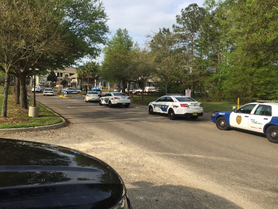
Recently a man walked into a leasing office at an apartment complex In Tallahassee and opened fire. What we know so far is that this man was acting out in retaliation for his wife having been fired from her job at the apartment complex earlier that day. He shot an employee of the apartment complex 6 times (not fatally) and then went back outside and casually waited for the police to come, looking, "like a man who had accomplished his goal."
Let's look at this case in the context of active shooter, mass shootings, and workplace violence. Is this man an active shooter? Is this an an instance of a mass shooting? Is this a case of workplace violence?
Remember that the agreed-upon definition (by the White House, the Department of Homeland Security, the Department of Justice, the Department of Education, and the Federal Emergency Management Agency) of an active shooter is "an individual actively engaged in killing or attempting to kill people in a confined and populated area; in most cases, active shooters use firearm(s) and there is no pattern or method to their selection."
Is he an active shooter? Was he:
- attempting to kill people
- by shooting them
- in a populated area
- with no particular rhyme or reason for who he aims at
Was it a mass shooting? While there is little consensus on what defines a mass shooting (see this blog post and this white paper on active shooter statistics for a more detailed explanation of this topic), all definitions assume at least 3 people are shot. This instance, then, would not be classified as a mass shooting.
Is this a case of workplace violence? There are four types of workplace violence offenders:
- Type I - The offender has no relationship with either the victims or the establishment. (This is random violence, often attempted robbery.)
- Type II - The offender currently receives services (e.g., retail, health) from the facility where they commit violence. (This often manifests as violence towards nurses or healthcare workers by their patients.)
- Type III - The offender is a current or former employee acting out against current or former place of employment. (If the woman who had been fired from the apartment complex had done the shooting [rather than her husband], the Tallahassee case would be Type III workplace violence.)
- Type IV - The offender has a relationship with an employee and domestic issues spill over into the workplace. (This often manifests as domestic disputes or domestic violence carrying over into the workplace of one or the other of the domestic partners.)
Now that we've determined that this is not a mass shooting, is potentially not an active shooter situation, but is definitely a case of workplace violence, do you feel relieved? Safer? More scared? Glad that one less active shooter case has NOT happened in the United States?
The reality is that workplace violence - whether it is a case of domestic violence, harassment, emotional abuse, threats, or an actual armed gunman - poses a greater threat to the daily safety of workers than do active shooters. Workplace violence occurs every day in places all over the country, and someone does not need to be wielding a gun to be classified as engaging in workplace violence; most instances of workplace violence do not involve guns at all. We've said it before, and we will say it again until workplaces are truly safe, but you need to have a workplace violence policy (i.e., a zero-tolerance policy), you need to make sure employees know about and follow the policy, and you need to make sure that your employees feel safe at work.

 RSS Feed
RSS Feed
